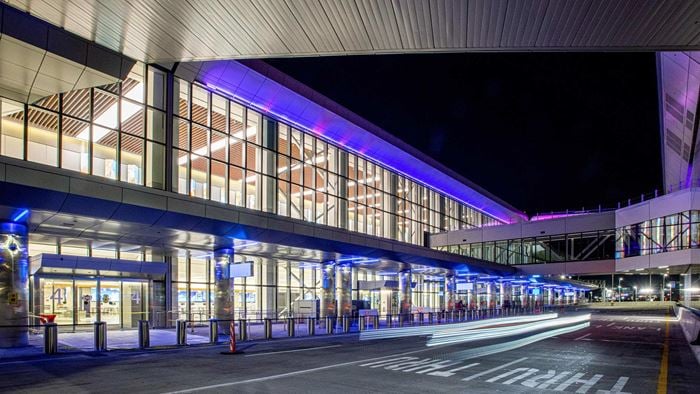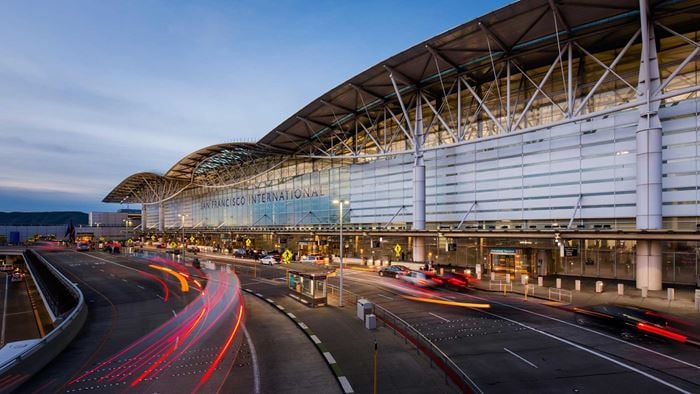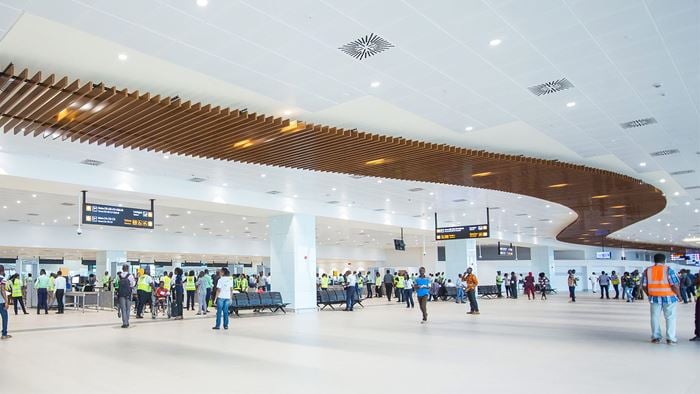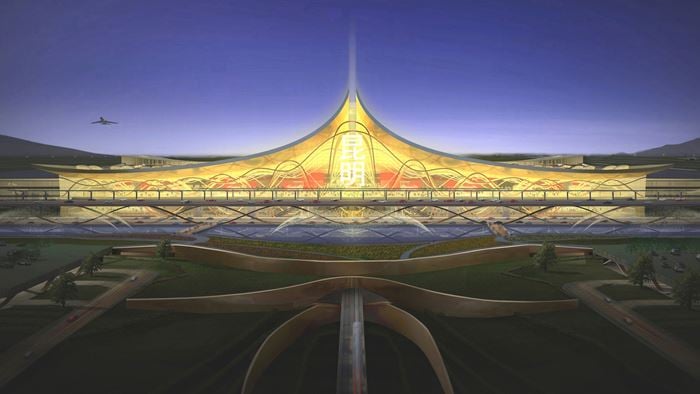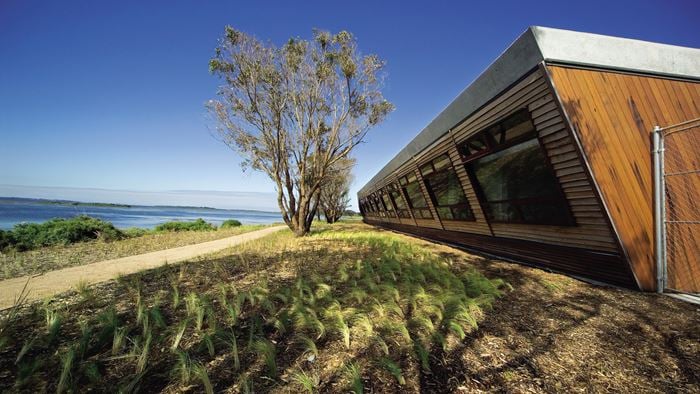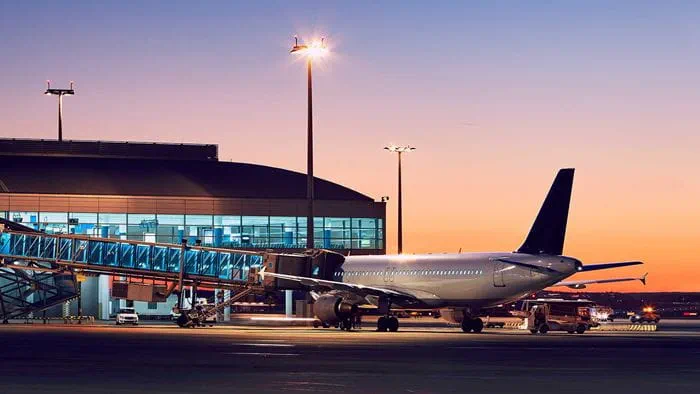Owned and operated by the Port of Portland, Portland International Airport (PDX) is consistently celebrated for its top-rated passenger satisfaction in leading annual industry surveys of US airports. As the Airport stands, its runways, gates, and concourses have the capacity to serve future passenger demand for the next 10 years or more. The Port’s Planning and Operations teams recognized that essential passenger processing functions in the main terminal, including the departures lobby, baggage handling system, security checkpoints, and baggage claim, would be undersized to meet future needs. Further, while PDX’s only terminal is spacious by today’s standards, its configuration is pre-9/11, with most retail and concessions located pre-security, and lacking in flexibility.
To address this, in 2015, the Port of Portland commissioned ZGF Architects, along with PAE, KPFF, Arup, and a team of 30 subconsultants, to undertake the PDX Terminal Core Redevelopment (TCORE) project to increase capacity, flexibility, and resilience; improve the passenger experience through the use of healthy materials and the latest digital tools; and reduce the airport’s carbon footprint and energy usage. To redevelop and optimize the terminal, ZGF assembled a local team with institutional knowledge about PDX, with Arup invited in order to bring a global perspective, leveraging both our wide-ranging technical aviation expertise and our international perspective.
TCORE is the keystone project in an overall $2 billion program known as PDXNext, which also includes redevelopment of Concourses B and E, a new rental car and ground transport center and relocated Port police and emergency operations facility. With approximately 1,200,000 ft2 of redeveloped floor area, around 70% of the TCORE project is comprised of existing spaces to be remodeled within buildings constructed over 50 years ago. The remaining 30% of the spaces will be created through the adaptation of space formerly occupied by two aircraft gates, into a building addition known as the “Western Expansion” or “WE”.
In collaboration with the project team, Arup provided a range of expertise including structural and mechanical engineering design services from concept through schematic design. We supported all design phases with consulting services in sustainability, aviation planning, aviation analysis, passenger flow modeling, energy modeling, acoustics, audiovisual systems, security technology, wayfinding, and logistics. Arup’s design team is providing construction administration support on the project through completion, which is slated for Summer 2025. Separately from the design project, Arup will also lead a new team of operational readiness, activation, and transition (ORAT) specialists to help guide commissioning and organizational transformation to facilitate successful growth into the new space.
Project Summary
1,200,000ft² total redeveloped space
33 million annual passengers by 2035
392,000ft²new mass timber roof
Listening before launching
To inspire the best design ideas, we embarked on a benchmarking tour of airports with recent construction both in the United States and internationally. In communicating with aviation officials in Los Angeles, Calgary, Oslo, Amsterdam-Schiphol, Newark, San Francisco, New York, Columbus, Tampa, Orlando, Charleston, and Boston, we gathered insights on major aviation redevelopment projects, identifying what went well and what did not. This initial investment has been invaluable — taking the time to listen to peer airport authorities speaking with candor has informed an optimal design process, as well as guided construction phasing and temporary facilities strategies that would have minimal impacts to the passenger experience.
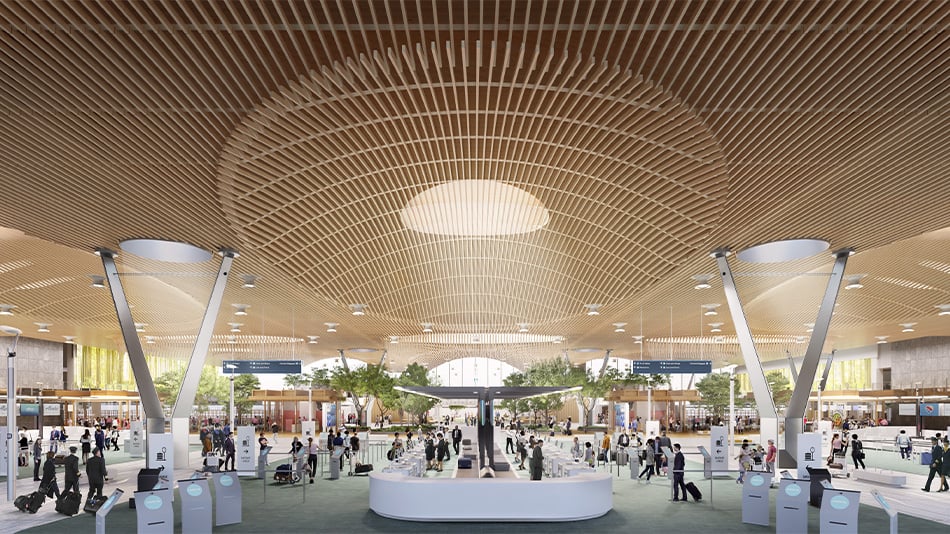
Sustainability strategies
The Port of Portland is targeting stringent energy requirements for the Airport. To surpass the status quo for typical performance, the design team has proposed an open-loop ground source heat exchange system, which is unusual for an airport of this size. The system uses the stable year-round groundwater temperature to make heating and cooling much more efficient than conventional boilers and chillers. Arup has also produced computational fluid dynamics (CFD) models of large open spaces in the terminal design to get a more accurate understanding of temperature comfort based on area, activity, and solar heat gain through the glazed façade and roof.
The entire TCORE area will be covered by a new long-span mass timber roof, designed by ZGF in collaboration with Arup and KPFF, using materials responsibly sourced from locally managed forests. Arup’s sustainability consultants assisted with the procurement of locally sourced wood for the new roof structure. Beginning in Spring 2021, the 392,000 ft2 roof was prefabricated on-site, and moved into place in sections September – December 2022. The new roof prominently highlights Oregon’s timber industry, the airport’s partnerships with the community, and the carbon benefits of sustainable forest management.
We also helped select and specify healthy interior finish materials to avoid toxic substances and support the airport’s goals around health, wellness, and passenger experience.
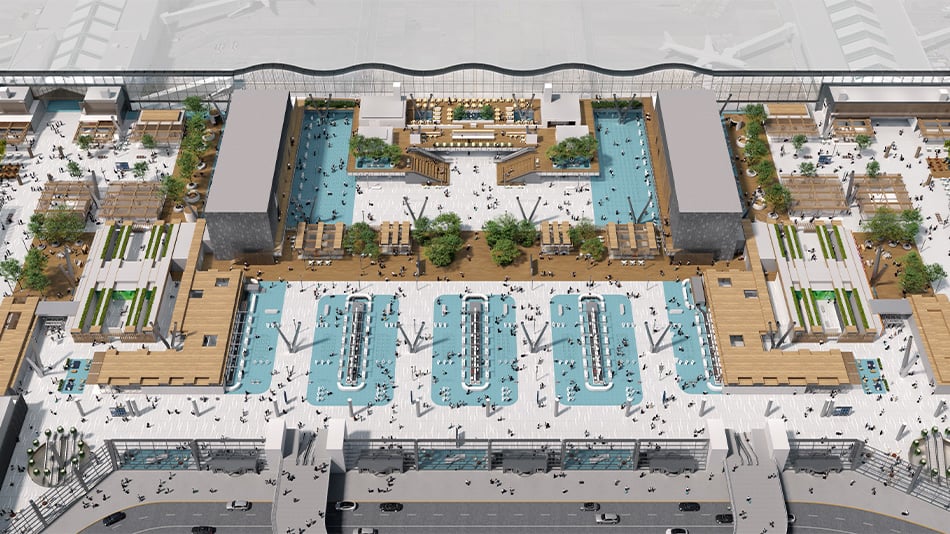
Layers of logistics
Our logistics team is also looking to reduce waste and increase efficiency with shortened routes both within the terminals and between other facilities. The team took a detailed look at the existing deliveries system, loading docks, and how goods are distributed and stored throughout the building to review operational parameters and suggest improvements. This analysis also included the integration of a new employee security screening strategy, a major logistics challenge that is relatively new to US-based airports of this size, which requires changes to access control protocols and re-routings of delivery of goods and removal of waste and recycling.
As construction activities have displaced the existing loading docks, Arup helped design and commission a new consolidated receiving and distribution center (CRDC) on-site away from the terminal complex, where goods are received, screened, sorted, and then delivered to the terminal and elsewhere on campus via smaller trucks and vans. This concept is a first for the Port, and allows for greater flexibility in delivery and waste operations, as well as reducing the required number of full-size loading docks.
“ Helping the Port of Portland realize their vision for a flexible, resilient, and modern terminal core developed on top of the existing legacy terminal – while operating continuously – has been a fascinating problem to solve. The ZGF team met the challenge with creative design and phasing solutions that maintain operations over the five-year construction period, which will result in a quantum leap in passenger experience once completed. ”Byron Thurber Associate Principal
The latest in digital
The Arup team has also provided best practice guidance in terms of passenger processing and security technology, analyzing examples from other airports while keeping up to speed on the latest TSA checkpoint standards. In developing requirements analyses for ticket counters and kiosks, Arup demonstrated the more that common-use technology can be utilized, the more efficient the facility and spaces will be. Airlines and technology vendors have also been consulted in the process, resulting in hybrid solutions that ensure the airport will successfully meet future traveler needs.
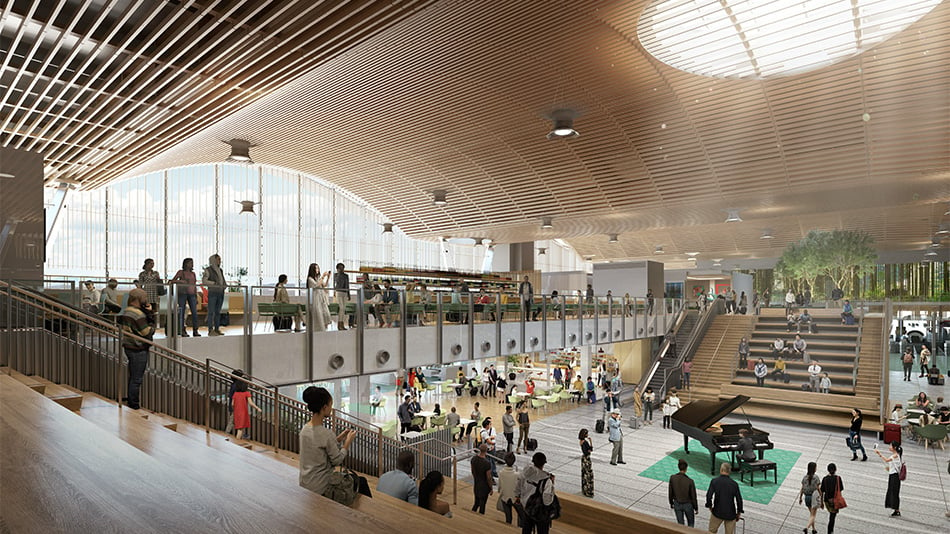
Passenger flows and wayfinding
Like many airports today, PDX is striving to provide better passenger experience by reducing stressful and unnecessarily prolonged processes and creating an inviting and inspiring environment. Throughout concept design, Arup developed pedestrian simulation models with real-time animations in MassMotion to show how passengers would circulate through the terminal. These models proved to be an effective method to refine the layouts of major public functional spaces such as the departures lobby, security checkpoints, retail zones, and baggage claim hall, giving stakeholders a tangible means to envision passengers utilizing the active space in an iterative process with the design team. In addition to informing the ultimate design of the space, pedestrian simulation modeling was also conducted to validate queuing spaces and flows through various temporary construction phase configurations, including closures of major processing elements and their temporary replacements. These were helpful in eliminating proposed plans that were operationally infeasible due to excessive bottlenecks and/or crowding.
In addition to facilitating smooth pedestrian flows throughout the space, our Wayfinding specialists advised the design team on user experience, providing advice to modify the design to promote more intuitive navigation, and to position wayfinding messages, signage, and other visual cues as necessary to guide passengers through unfamiliar areas of the airport’s main terminal.
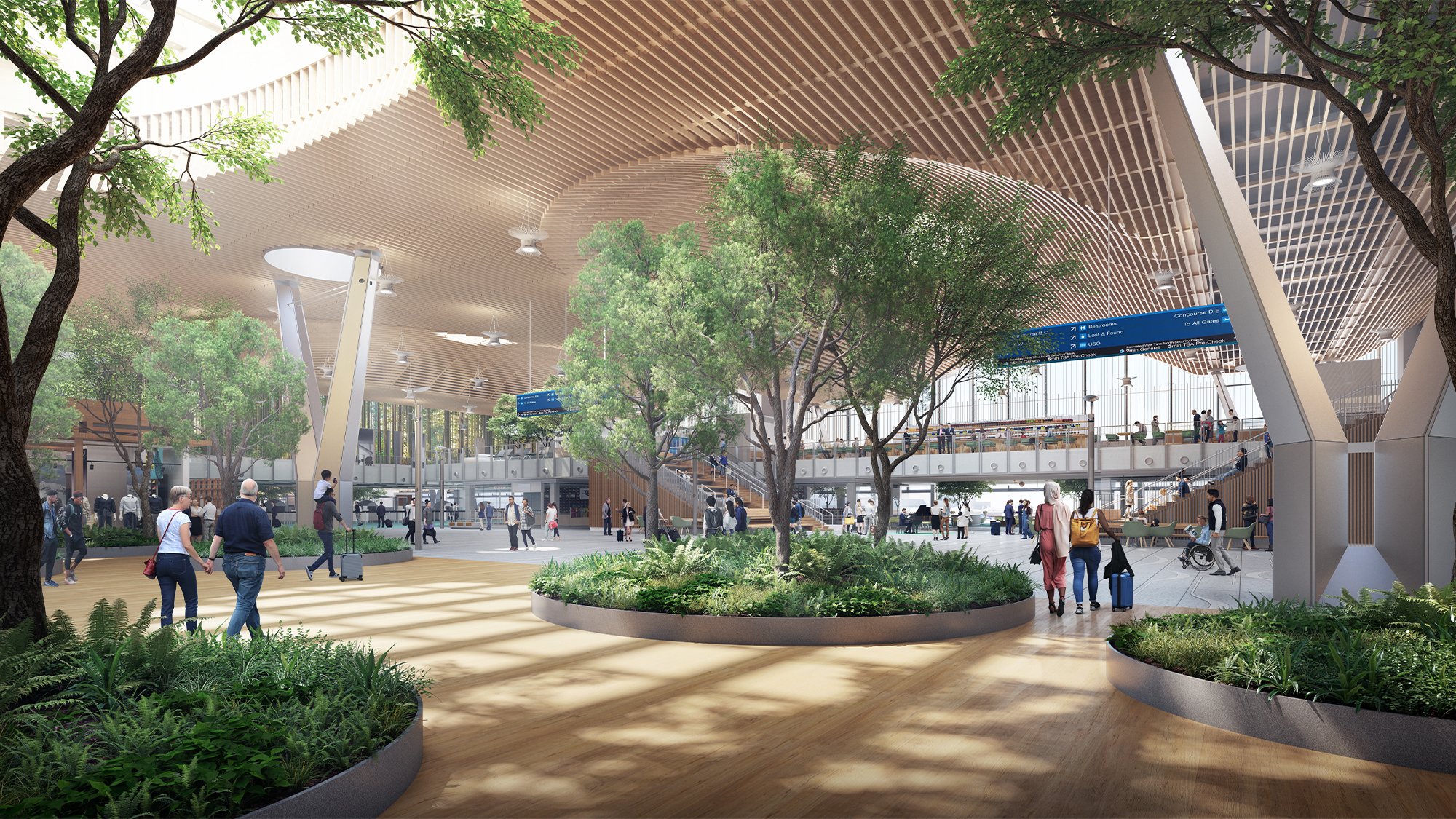 ;
;


